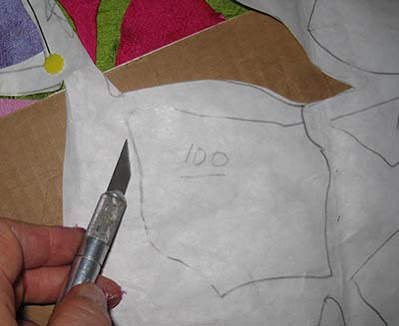The scenery is supernatural - azure waves, meandering rivers, lush jungles, gravitationally-obedient waterfalls - but best of all, this Hawaiian island has three of the most spectacular fabric stores I've ever seen: Vicky's Fabrics, Discount Fabric Warehouse, and Kapaia Stitchery. Their offerings were so tantalizing that I broke my years-long fabric diet (not buying new fabric except in the frequent case of psychological emergency) and gobbled up a yard or three.
You'd think that fabric prices would be higher in Hawaii, and you'd be right. Quality quilting fabric that's about $10-$12 a yard in LA is about $12-$13 a yard in Kauai. But even at $13, it's about the same price and lower in calories than the 11-ounce bags of tourist macadamia nuts.
All three of these shops have beautifully curated collections. The employees were beyond helpful - I had deep. meaningful conversations with them. What a joy!
I visited Vicky's Fabrics in Kapaa on our first day. It looks small, but they stack and pack a lot inside. Half the store is quilting-potential fabrics - batiks, solids, orientals, etc. I couldn't resist a yard of this regal print:
I needed it! My 16-year-old might get married some day!! There are also abundant tropical prints (more than this picture shows)....

Down in the front, you can see bolts from Robert Kaufman's Indigo line. I'd never seen this fabric line in my own LQS, and I was thunderstruck! So I bought a yard of this:

Vicky's also had dupioni silk that's just about the same price as in LA's fabric district, at about $20 a yard. They had one especially deep blue/green dupioni that I didn't buy, but which got stuck in my head.

...dark to silvery/touched by angels...

...greens and blues...
The day before our departure I tricked the family into taking me to the remaining two fabric stores, close to each other in Lihue. First, Discount Fabric Warehouse. What it lacks in atmosphere, it makes up in price and selection. I came across a bin with 54" wide rolls of Japanese-manga-inspired fabrics, on sale from a mere $7 to an even more mere $3.50 a yard!
It's not highest quality fabric - it's kind of thin - but it's awesome and geeky and Harajuku and 54" wide!! And did I mention it was 4 bucks a yard?
(When I handed the clerk my credit card, she got excited and asked me if I'm related to David Perlmutter of "Grain Brain" fame, Not that I know of, I told her, but I hope I might inherit some of the millions he's made with his depressing-yet-iffy killer bread hypothesis. That led her to mention his views on C-diff., the hospital-borne infection related to antibiotics wiping out good gut flora. There's a new development in C.diff. treatment - fecal donation - the clerk raised it first, not me - and she said it was not an idea she could never bear. I said I bet she could if it might save the life of a loved one - then I shared that my father died from a C.diff. infection two years ago, and no doctor mentioned the donation possibility - I would have gladly shared whatever substance I could possibly extrude if it might have saved his life. It was a lovely conversation, really!)

If Disneyland created a Hawaian stitching store, it would look like this. Jam-packed with gorgeous fabrics, products made from those fabrics, and COLOR
If you forget to bring a hand project on your vacation, they sell carry-along Hawaiian applique pillow kits to keep you happy stitching on the beach while your family is swimming, sunning, snorkling, surfing, and stand-up paddling.
By the counter, they were selling precuts of their signature batik fabrics for a mere $10.99/yard - mainland prices! - How could I resist these ferns?
And customs won't let you out of Hawaii without a sea turtle batik:
On our last day, we happened to stop for coffee near Vicky's, so I ran in one more time, to buy a quarter-yard of the deep blue dupioni above that I'd been coveting, gold dupioni to keep it company, and one more piece from the Indigo collection:
(With the clerk - the same lovely and hard-working young woman who had served me six days earlier - I wound up in a conversation about physical disabilities, scars, and weight issues, and thoughtless comments people make about these challenges. It was a conversation that moved me greatly - I left the shop with a bag of fabric and a treasure in gratitude for meeting her in particular, and the luxury of a Hawaiian shopping vacation in general.)
We also stumbled across two yarn stores, where multi-hued Hawaiian-dyed yarn sells for around $29/skein. Twisted Turtles Yarn Shop in Lihue, has a wide selection of mainland as well as Hawaiian yarns. Hanalei Strings is a unlikely combination ukulele/yarn shop, carrying mostly the gorgeous Hawaii-dyed skeins. While my DD and DH browsed a spectrum of brightly-colored ukuleles,
I browsed yarn like this,
Something for everyone!
In conclusion, some of the colors in Hawaii aren't blue or green. There's also a ton of purple, and tropical flower colors, and the complicated sunset presentation.
There's an entire industry of tourist shirts dyed with the earth.
Chickens are ubiquitous, so add more ocher, and coxcomb colors to the mix:
More Kauai tips: Try the beet salad at Tiki Iniki in Princeville. Colorful and insanely delicious. And your bill comes like this:
The Na'apali Coast tour is totally worth it. Keep close track of your prescription glasses when you go in the water - I think the chickens on Anini Beach stole mine. (Reward for return!)

























































